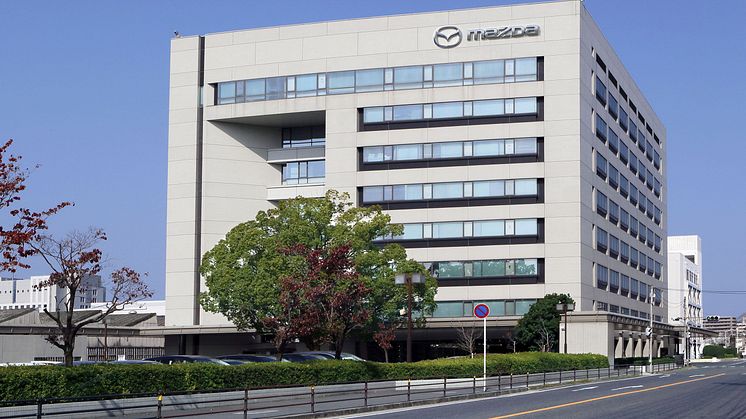
Pressemelding -
MAZDA CONTINUES TO BUILD FOR THE FUTURE
- New partnerships to enhance electrification capabilities
- Strong commitment to growth of new EVs in Europe
- Target of zero fatal accidents caused be a new Mazda by 2040
Hiroshima / Leverkusen, 21 November 2022. The Mazda Motor Corporation today announced an update to the Mazda mid-term management plan update and management policy up to 2030.
The announcement highlighted that Mazda is positively responding to the highly uncertain business environment and is renewing its commitment to achieving carbon neutrality in all its operations by 2050.
In recent years, the environment in which automotive manufacturers operate has changed dramatically, particularly in Europe with the growth of electrified products and the associated regulatory environment.
To be able to flexibly respond to these future changes, Mazda presented a three-phase plan towards 2030.
Acceleration of electrification under the multi-solution approach
Starting today and through 2024, the company will focus on achieving more resilience towards changes in the environment, focusing on strengthening our technology development, supply chains and cost reduction efforts. During this time, Mazda will continue to accelerate the electrification of its fleet, launching attractive products that meet regulations in the respective markets by consequently implementing the Mazda Multi-Solution approach.
In Europe, we are very proud of the success of the Mazda MX-30 BEV[1], the incredible sales results for the recently launched Mazda CX-60 PHEV[2], where we have sold over 20,000 units, and the arrival next year of the Mazda MX-30 R-EV and other electrified products thereafter, including the three-row Mazda CX-80.
Transition to electrification
From 2025 until 2027, as regulations become more stringent, especially in Europe, Mazda will be continuing to build the necessary parts to transition towards the electrification of our range. This will include both the refinement and use of Mazda’s multiple electrification and manufacturing technologies as well as the global launch of new battery electric vehicles.
Advancing launch of BEVs towards 2030 through strategic partnerships
This transition will be completed during the third phase until 2030.
Mazda will achieve the transition towards electrification through partnerships in different areas. During the presentation, it was announced that Mazda has signed a collaborative agreement[3] to jointly develop and produce highly efficient electric drive units with its partners.
As a first step towards the electrification of all its models by 2030, Mazda has joined a joint venture company[4] to develop highly efficient production technology and establish a production and supply framework for electric drive units.
The MC management also announced that they have concluded a joint development agreement[5] for the development of inverters, including silicon carbide semiconductors, and signed a joint development agreement[6] for advanced technologies for motors, while also establishing a joint venture company together[7]with two partnering companies to learn and develop motor technology.
Mazda will continue to procure batteries from its partner companies. In addition to our existing suppliers, Mazda recently concluded an agreement with Envision AESC to procure batteries for electric vehicle production in Japan. In the medium term as we will be launching additional battery electric models, Mazda will consider possibilities to invest in battery production.
As we move forward advancing our products, Mazda will continue to improve the safety of its products, putting efforts in developing human-centric advanced driver assistance technology, aiming for zero fatal accidents caused by any new Mazda by 2040.
[1] Mazda MX-30 electricity consumption 17.9 kWh/100km, CO2 emissions 0 g/km (WLTP
combined). Vehicles are homologated in accordance with the type approval procedure WLTP
(Regulation (EU) 1151 / 2017; Regulation (EU) 2007/715).
[2] Mazda CX-60 e-Skyactiv PHEV fuel consumption 1,5l/100km, CO2 emissions 33g/km (WLTP
combined). Mazda CX-60 e-Skyactiv D fuel consumption 4.9-5.3 l/100 km, CO2 emissions 127-139
g/km (WLTP combined). Vehicles are homologated in accordance with the type approval procedure
WLTP (Regulation (EU) 1151 / 2017; Regulation (EU) 2007/715).
[3] Including Imasen Electric Industrial Co., Ltd., Ondo Corporation, Chuo Kaseihin Co., Inc., Hiroshima Aluminum Industry Co., Ltd., HIROTEC Corporation, Fukuta Electric & Machinery Co., Ltd. and ROHM Co., Ltd
[4] Including Ondo, Hiroshima Aluminum Industry and HIROTEC
[5] Including Imasen Electric Industrial and ROHM
[6] Including Chuo Kaseihin and Fukuta Electric & Machinery
[7] Including Fukuta Electric & Machinery


